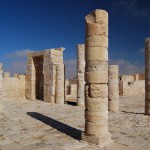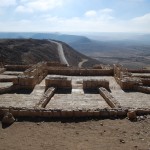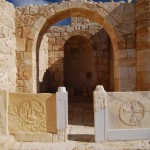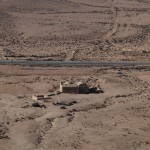City of Avdat (Israel)
At the crossroads of an old trading road which is called the Incense Route, between the city of Petra and the Mediterranean port of Gaza in Israel, the old Nabataean city of Avdat lies.
Greek scientist Ptolemy in his work “Geography” mentions the city of Avdat as one of the seven settlements of the Roman province of Arabia. The first mentions of Avdat date back to the IIIrd century BC.
The city of Avdat bears the name of one of the kings, who was revered by Nabataeans as a deity. It is not known which of the kings gave his name to the city, but the history knows at least three Nabataean rulers who had the name Avdat (or Obodas).
The city of Avdat can be found on the Peutinger Table, which is a copy of an old Roman map.
In the first century CE, Avdat suffered great damage from the raids of Arab nomadic tribes. And after the death of the last Nabataean king Rabbel I, the city and the kingdom itself were captured by the Romans.
The city prospered as an important economic and strategic center of the empire during its Byzantine period. But the devastating earthquake of 630 stopped its further development and ruined the city’s prosperity, rasing it to the ground. People abandoned Avdat that had been destroyed by nature.
In Avdat well-preserved remains of some ancient Nabataean constructions were discovered, including temple buildings, watchtower, residential complex, wine presses, military camp, public baths and reconstructed agricultural terraces.
German traveler Ulrich Seetzen, who visited the ruins of the city in 1807, was the first European explorer of Avdat.
In 1870, it was established that they were the ruins of Avdat.
In 1902, Czech explorer and archeologist Alois Musil excavated the remains of a military camp and city public baths near Avdat.
The first official archeological excavations began only in 1958. Scientists from the University of Jerusalem and National Parks Management of Israel participated in the excavations of Avdat, as well as famous Israeli archeologists Michael Avi-Yonah and Abraham Negev.
Among the archeological landmarks excavated in Avdat that belong to the Nabataean period it is worthwhile to point out a pottery workshop with a preserved furnace and a gateway arch with an inscription that has been dated circa 268 BCE.
A burial vault with an altar and relief images of the Moon and the Sun belong to the Roman period of the city. Also three inscriptions were discovered there, made in ancient Greek, with female names mentioned in them, which can be explained by the presence of priestesses of the Aphrodite’s temple in Avdat.
Scientists attribute to the Byzantine period the following constructions: residential quarter with houses built along the central street on both sides and a well-developed net of wells and channels for water collection; city fortress with a big well, two stone baptisteries, the large one in the shape of a cross; public baths on the slope of the mountain; five wine presses with an underground channel connected to the wine collector and wine storage; and a restored Byzantine house with cells for food storage and a toilet room. Skulls of cows, remains of a bunch of grapes and an embossed image of the cross were also found there.
In 2005, Avdat was declared a World Heritage Site by UNESCO, as a part of the Incense Route that has been wonderfully preserved.




